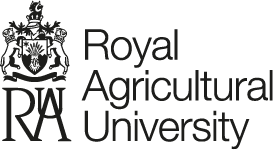Unravelling Enterococcus cecorum infection on UK broiler farms: Correlating clinical signs with genomics, persistence and animal behaviour
Watson, Katharina, Arais, Lavicie, Cordoni, Guido, Green, Samantha, Kirchner, Mirands, Kyriazakis, Ilias, O'Kane, Peter, Schock, Alexandra, Smith, Rebecca and Anjum, Muna (2024) Unravelling Enterococcus cecorum infection on UK broiler farms: Correlating clinical signs with genomics, persistence and animal behaviour. In: Proceedings of the British Society of Animal Science Annual Conference. The role of livestock in our ecosystems and economy, 9th - 11th April 2024, Belfast.
|
Text
BSAS_2024_Proceedings.pdf - Published Version Available under License Creative Commons Attribution Non-commercial No Derivatives. Download (13MB) |
Abstract
Application To combat endemic Enterococcus cecorum disease in UK broilers, it is essential to understand the pathogenesis of the organism and to develop tools for early disease detection and prevention. This will ultimately result in improved animal welfare and reduced economic losses. This pump-priming project provided a scientific basis for future research, by starting to address significant knowledge gaps in E. cecorum epidemiology. Research outputs can be used further to inform farm management practices related to disease management and prevention. This research will also aid the poultry industry with its antibiotics stewardship programme. Introduction E. cecorum infection is an emerging endemic disease in UK and global broiler poultry with significant welfare concerns and results in considerable economic losses to the industry (Wood et al., 2002; De Herdt et al., 2009; Stalker et al., 2010; Dunnam et al., 2023). There are substantial research gaps with regards to E. cecorum pathogenesis, source of infection, transmission routes and strain differences in terms of their ability to cause disease. In addition there is a need to detect E. cecorum infection earlier in the production cycle to aid disease prevention. The aim of this project was to fill knowledge gaps by conducting research into pathogen genomics, transmission and persistence as well as early detection of disease through behavioural monitoring Materials and methods Four commercial UK broiler farms (A-D) with a range of historical performances and history of E. cecorum infections, were chosen for the study. Farms operated an all- in all-out production system with chicks being placed into disinfected sheds at 1 day of age followed by a 37 to 42 day growth cycle. Water and feed intake and environmental parameters were automatically monitored and final performance data was collected. A sample of birds that had been found dead or were culled for any health reasons, were presented for examination by poultry veterinarians. A total of 725 samples were collected on days -1, 7, 14 and 21 (Table 1). DNA was extracted from all samples and E. cecorum was detected using qPCR. Samples were also cultured and E. cecorum was identified using Matrix-assisted laser desorption/ionization (MALDI-TOF). Two E. cecorum strains isolated from joint fluid were tested for tenacity at 23 �C and 32 �C on concrete surfaces in a 21 day long in-vitro experiment. A total of 180 E. cecorum sequences from public repositories (n = 107), APHA archives (n = 74) from 2003 to 2022, and five E. cecorum isolated in this farm study were submitted to whole genome sequencing (WGS) and a maximum likelihood phylogenetic tree constructed. The APHA SeqFinder pipeline was used to detect AMR genes. Finally, commercially available intelligent camera systems were installed on trial farms to record flock activity patterns, cluster movements, distribution and spread. Results No E. cecorum outbreak was observed during the trial period.E. cecorum was detected in 215/725 (29.7%) samples by qPCR (Table 1). It was detected on all farms and in all sample types, including all chick papers suggesting a possible route for entry to farms. qPCR also showed that 99.0% and 88.3% E. cecorum positive samples, respectively, from farms D and C were taken at day -1. E. cecorum was detected throughout the trial on farms A and B. Three E. cecorum were isolated from farm B caecal samples and two from infected birds, which showed sporadic E. cecorum infection; but E. cecorum was not isolated from any environmental source, including from farm B. Survival experiments on concrete showed that both E. cecorum isolates survived longer at 23 �C than at 32 �C. One isolate survived for longer at both temperatures, and was still viable on day 21. Analysis of WGS data indicated several antimicrobial resistance (AMR) genes conferring resistance to aminoglycosides, macrolides and tetracycline were variably present in isolates. Phylogenetic analysis clustered the majority of UK isolates into three groups which are mostly separated from other non-UK isolates collected worldwide. The groups were widely distributed across all the farms included. Data from the cameras indicated that on farms A, C and D bird activity and distribution patterns were consistent with a healthy broiler population. Analysis of data from a house in farm B revealed an unexpected drop in activity and a decrease in distribution after day 15, signalling a potential health concern. This coincided with a noticeable drop in feed consumption from day 12 and diagnosis of dysbacteriosis by the primary veterinarian. Conclusion This study has highlighted a range of possible environmental reservoirs for E. cecorum, by detecting DNA in range of environmental sources. The results indicate that E. cecorum may be present as a harmless commensal at low levels within the farm environment, indicating further work is required to understand conditions that promote changes of this commensal to a pathogen that causes large disease outbreaks on UK farms. Bird activity data from cameras could not be linked to E. cecorum infection, primarily due lack of E. cecorum associated disease on trial farms. Nevertheless the technology shows promises as a reduction in bird activity and change in the distribution was detected on farm B, where gastrointestinal disease was diagnosed. This project has brought together academia, government bodies, veterinarians, poultry farmers and other stakeholders related to the broiler industry. This collaboration has allowed us to harness expertise and knowledge in all areas relevant to the project and to design trials with scientific outputs that can inform farm management practices related to E. cecorum disease prevention and management.
| Item Type: | Conference or Workshop Item (Paper) |
|---|---|
| Keywords: | Enterococcus cecorum, Broilers |
| Divisions: | Agriculture, Science and Practice |
| Depositing User: | Dr Katharina Watson |
| Date Deposited: | 04 Apr 2025 14:12 |
| Last Modified: | 02 May 2025 08:29 |
| URI: | https://rau.repository.guildhe.ac.uk/id/eprint/16950 |
Actions (login required)
 |
Edit Item |

